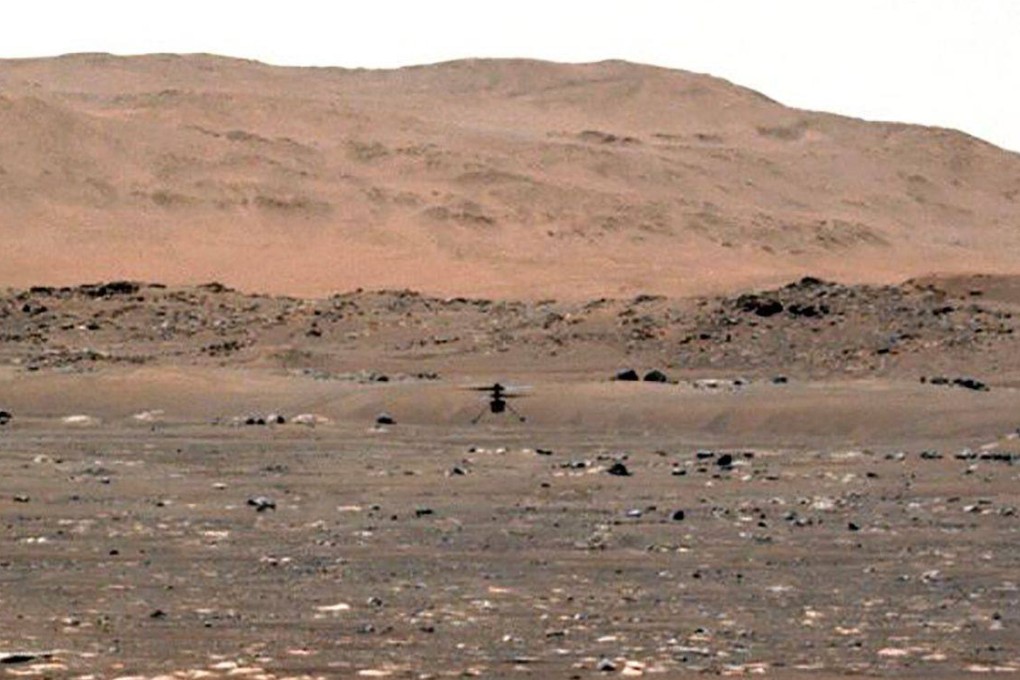Nasa’s Mars helicopter Ingenuity makes history with first flight on another planet
- The 1.8kg, US$85 million craft achieved the first powered, controlled flight on another planet, which was hailed as a Wright Brothers moment
- Nasa flight controllers had to wait over three hours to see if the preprogrammed flight had succeeded 287 million kilometres away

The triumph was hailed as a Wright Brothers moment.
The mini 1.8kg (4-pound) helicopter named Ingenuity, in fact, carried a bit of wing fabric from the 1903 Wright Flyer, which made similar history at Kitty Hawk, North Carolina.
“Altimeter data confirms that Ingenuity has performed its first flight, the first flight of a powered aircraft on another planet,” said the helicopter’s chief pilot back on Earth, Havard Grip, his voice breaking as his teammates erupted in cheers.
Flight controllers in California confirmed Ingenuity’s brief hop after receiving data via the Perseverance rover, which stood watch more than 65 metres (200 feet) away. Ingenuity hitched a ride to Mars on Perseverance, clinging to the rover’s belly upon their arrival in an ancient river delta in February.
The US$85 million helicopter demo was considered high risk, yet high reward.
